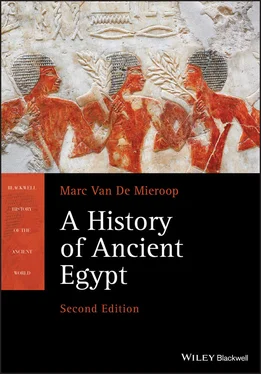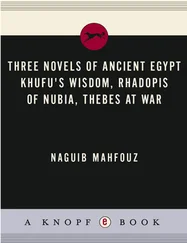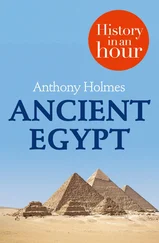Fourth‐millennium Babylonia was dominated by the Uruk culture, which had a widespread regional impact from its core in the south of Iraq. By 3200, Uruk itself was a large city with many monumental buildings and a distinct culture that is visible in its material remains. One of the culture’s most remarkable features was its influence throughout western Asia, a phenomenon of the mid‐4th millennium we call the Uruk expansion. People living in the peripheries of southern Iraq – in Iran, northern Iraq and Syria, and southern Turkey – adopted elements of the Uruk culture to different degrees. Some people in northern Syria surrounded themselves fully with Uruk‐style goods, and many scholars think that they were colonists coming from southern Iraq. In other places, Uruk and local cultural features occur in varying proportions. Some elements of the Uruk culture, especially a type of container we call the Beveled Rim Bowl, appear over an enormous area from Pakistan to the Syrian coast, and historians assume that trade relations caused this widespread cultural influence. It is thus logical that the Uruk expansion may have reached Egypt as well.
In the art and architecture of late Predynastic Egypt appear several elements that have a strong Babylonian flavor. Their foreign origin is suggested by the fact that they existed only briefly in Egypt whereas in Babylonia they became part of the defining features of the culture. A common scene in the rich visual record of the period is the domination of animals by one or two men. The “master of animals” already appears in the wall painting of tomb 100 at Hierakonpolis of the Naqada II period, and in some examples of the image the men seem to wear distinctly Babylonian clothing. The motif soon disappeared from Egyptian art but flourished in later Babylonia. Similarly short‐lived in Egypt was the use of the cylinder seal, a small stone carved with a picture that becomes visible only when rolled on clay. The Egyptians used cylinder seals in the 3rd millennium only, whereas the Babylonians continued to produce large numbers of them for 3000 years. Also the use of mud‐brick niched façades in Predynastic and Early Dynastic tombs, and most likely palaces, resembles Babylonian architecture where mud‐brick construction dominated throughout its history. These elements have motivated many scholars to suggest a strong Babylonian influence on early Egypt. Some have credited Babylonians with inspiring Egyptian ideas of the state and writing even though these differed in nature from their Babylonian counterparts. But others point out how limited the Babylonian material is and that Babylonian practices do not necessarily predate Egyptian ones. They also stress that no evidence of the Uruk expansion appears in the region between northern Syria and Egypt, which would have been the natural passage from Babylonia to Egypt. It is interesting that no Egyptian or Egyptian‐style material occurs in Babylonia. Today scholars prefer to stress indigenous forces in the evolution of early Egypt and they see the Babylonian features as the result of intermittent trade contacts, which may have been across the Persian Gulf and Red Sea rather than overland via Syria.
Late 4th‐millennium Nubia
Late 4th‐millennium evidence from Nubia north of the 2nd cataract shows the development of a social hierarchy there. Some of the tombs excavated at the site of Qustul were much larger and richer than the surrounding ones and indicate the presence of specially honored people. In one tomb archaeologists found a fragmentary incense burner decorated with Egyptianized royal imagery: A man wearing the crown of Upper Egypt sits in a boat surmounted with a serekh . The scholar who published the tomb claimed that these distinctly royal elements predated evidence from Egypt and suggested that the idea of kingship originated in Nubia and then inspired Egypt. Later research showed, however, that the Qustul tomb was of the same date as the late Predynastic royal‐style tombs of Egypt. Because there is evidence of the processes that led to state formation in Egypt and not in Nubia, it is much more probable that Egyptian events influenced Nubia rather than the other way around.
Indeed, the rise of the Egyptian state had an impact on its immediate peripheries. Whereas Egypt and Nubia had shared a material culture before the 4th millennium, the late Naqada culture was purely Egyptian. Contemporaneous Nubians continued to emphasize materials like ceramics and ostrich shells that had lost their importance in Egypt. We label the Nubian archaeological remains with the term A‐Group. The emerging elites in late Predynastic Egypt desired luxury products, such as gold, ivory, and ebony, which they obtained from or through Lower Nubia in exchange for foods, including cheese, oil, and honey. The vessels used in the transport as well as some luxury objects, such as stone palettes and copper tools, ended up in the tombs of the Nubian elites. The tomb at Qustul with the royal incense burner seems to have been an extreme example of that trend. These trade relations gave way to hostilities, however, and the Egyptians began to portray the Nubians as enemies, stereotypically depicted as bound naked men overcome by Egyptian royal might. The disappearance of A‐Group material around the beginning of the 1st dynasty in Egypt is probably a result of this change in attitude.
Late 4th‐millennium Palestine
To the north of Egypt, in Palestine people had developed an urban culture in the late 4th millennium. It is clear from objects in late Predynastic tombs – especially pottery – that the Egyptians imported wine, oil, and copper from that area. The trade does not seem to have required a permanent Egyptian presence, as we find no Egyptian archaeological remains in Palestine of the late Predynastic period. The situation changed in dynasties 0 and 1, when many archaeological sites in Palestine contained Egyptian materials, such as imported pottery. Some sites had typical Egyptian architecture as well as pots in Egyptian styles but made of local clay, which suggests that Egyptians had moved into the region and set up colonies. Yet the earliest Egyptian kings were militarily active in Palestine as well. Possibly even the Narmer Palette shows an attack on Palestinian settlements, and in the 1st dynasty originated images of kings defeating men whose depiction in later iconography became the stereotype for the hostile “Asiatic,” the term Egyptians used to refer to people from the Near East (and adopted as such in modern scholarship). Thus both in Palestine and Nubia the original trade relations with Egypt that had benefited local elites seem to have been replaced by Egyptian military aggression under dynasties 0 and 1. The growth of the Egyptian state with its economic and military powers thus had a great effect on its periphery.
In the earlier 2nd dynasty the Egyptian presence in Palestine and the import of goods from that area declined strikingly. Instead, long‐distance overseas contacts with ports farther north commenced, especially with Byblos in Lebanon. There the Egyptians could obtain long beams of cedar wood as well as agricultural products, which could be shipped by boat. These long‐distance trade contacts would flourish in the Old Kingdom. Ports like Byblos also gave access to luxury items, such as lapis lazuli from Afghanistan, which previously reached Egypt through overland trade.
Tomb U‐j, constructed at Abydos around 3250 BC, was the first of a long series of tombs in ancient Egypt whose occupants had a very special status. Although the tomb was a relatively small construction, it was filled with grave goods that came from all over Egypt and Palestine. The ability of one man to command these resources from far afield was the result of a centralization of power in Upper Egypt where early centers had joined together. The people of this region seem to have gradually extended their control over the rest of the country so that by 3000 a single king ruled Upper and Lower Egypt, thereby initiating Egypt’s dynastic history. The new state required new ideologies and methods of government and administration, which developed in parallel with kingship and included ideas about the gods and how to honor them, bureaucratic techniques, and writing. Their invention was a process that needed several centuries to be completed. Yet compared to many ancient cultures, it was rapid. By the end of the 2nd dynasty, around 2686 BC, Egypt had developed into a stable territorial state under a strong king and an effective administration. The basis for further developments was fully in place.
Читать дальше












